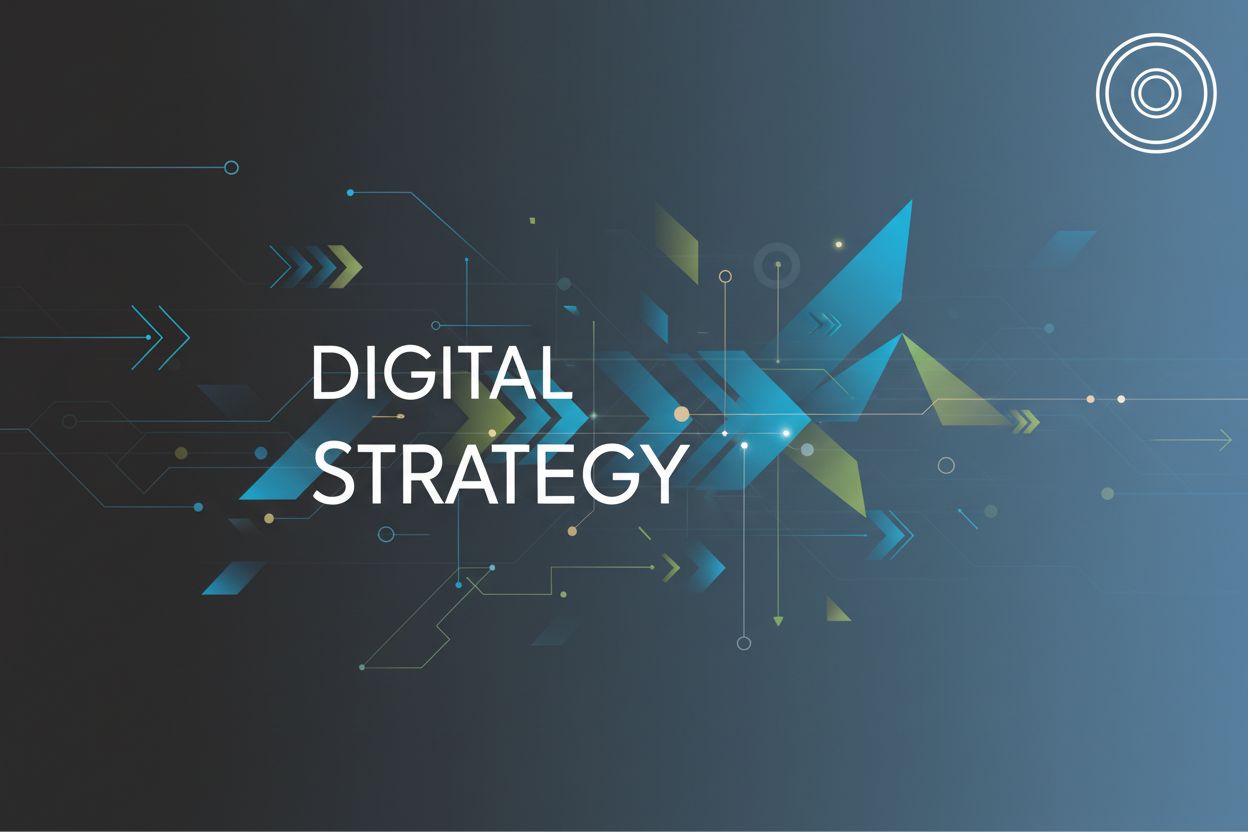Exploring the Dynamics of Structure and Strategy
TL;DR
The Interplay of Structure and Strategy in Digital Transformation
Alright, let's dive into the messy but crucial relationship between structure and strategy in digital transformation. It's kinda like asking which came first, the chicken or the egg, right?
First off, we need to talk about what structure and strategy actually mean in this crazy digital age. Forget the old textbook definitions, seriously. Now, we're talking about how easily a company can bend, adapt, and not break when new tech comes along.
- Think about healthcare; a hospital might have a cutting-edge robotic surgery system but if their departments don't share data smoothly, then are they really transformed?
- Or a retail giant trying to personalize shopping experiences but their IT team is stuck maintaining archaic systems. It is what it is.
A rigid structure? That's basically a digital innovation repellent. (HOW AEROS EVBA SOLVES AIRSHIP ENGINEERING' CORE LIMITS) It's like trying to pour water into a funnel that's clogged with, well, you get the picture.
Silos are a big one. You know, when the marketing team doesn't talk to the sales team, and neither of them knows what the customer service folks are up to? Customer experience goes straight down the drain when no one talks to each other. (10 Ways Customer Success Can Break Through Silos - ESG)
What happens when a bank identifies key digital objectives like, say, boosting mobile banking adoption, but are mapping existing organizational structure to these objectives? It becomes clear that the app team, security team, and customer support are all working with different ideas of what "easy to use" even means.
To actually align your org chart with those shiny new digital goals, you gotta look at how your teams are set up. Are they built for collaboration or just to keep their own little kingdoms running? Sometimes, you might need to restructure teams, create cross-functional task forces, or even rethink reporting lines. It's about making sure the people doing the work can actually talk to each other and move in the same direction. A messy process? Always! But totally worth it if you are asking me.
Frameworks for Digital Marketing and Business Digitization
Okay, so you're trying to figure out how to build a solid digital marketing strategy and digitize your whole business? Sounds like a fun weekend, eh? Well, both need a framework, or you'll end up with a lack of focus and wasted resources.
Frameworks like RACE (Reach, Act, Convert, Engage) and SOSTAC (Situation, Objectives, Strategy, Tactics, Actions, Control), are really popular. These frameworks offer a structured approach to planning and execution, but how do you pick the right one? It's not like choosing a flavor of ice cream, seriously.
- Choosing Between Frameworks:
- RACE is great for a more focused, campaign-driven approach, especially if your main goal is to improve customer acquisition and retention through digital channels. It's very marketing-centric and helps you map out the customer journey in a clear, actionable way. If you're looking to optimize your digital marketing efforts and understand how customers interact with your brand online, RACE is a solid choice.
- SOSTAC, on the other hand, is more comprehensive and can be applied to broader business strategy and digitization efforts, not just marketing. It's ideal when you need to conduct a thorough analysis of your current situation, define clear objectives, and then map out the strategy, tactics, actions, and control mechanisms for achieving them. If you're undertaking a larger digital transformation that involves multiple business functions, SOSTAC provides a more holistic planning structure.
- What you actually need depends on your current business needs and the scope of your digital initiatives. Are you trying to fine-tune your digital marketing campaigns (RACE)? Or are you looking to overhaul your entire business model with digital at its core (SOSTAC)? Sometimes, elements of both can be useful, or you might adapt them to fit your unique situation.
Now, let's talk about how these frameworks tie into general digitization steps:
- Understanding Your Current State: Both frameworks start with understanding where you are. For digitization, this means assessing your current digital maturity, existing technologies, and customer touchpoints. This aligns with SOSTAC's "Situation" and RACE's "Reach" (understanding your current audience).
- Setting Clear Objectives: You can't digitize effectively without knowing what you want to achieve. This directly maps to SOSTAC's "Objectives" and RACE's "Convert" and "Engage" (defining what success looks like).
- Developing a Strategy and Tactics: This is where the frameworks really shine. They help you move from "what" to "how." For digitization, this means identifying the technologies, processes, and marketing approaches needed. This aligns with SOSTAC's "Strategy" and "Tactics," and RACE's "Act" and "Convert."
- Implementing and Controlling: Frameworks emphasize action and measurement. For digitization, this means rolling out new systems, training staff, and continuously monitoring performance. This connects to SOSTAC's "Actions" and "Control," and RACE's "Engage" (ongoing interaction and measurement).
Digitization is more than slapping a new website on an old business. You need a roadmap.
- First, figure out where you are now.
- How much of your business is already digital?
- What's working? What's not? Be honest...
- Set some realistic goals.
- "Become fully digital by next Tuesday" isn't realistic, come on.
- Think about what will actually move the needle.
- Prioritize, prioritize, prioritize.
- What projects will give you the biggest bang for your buck?
- What's actually feasible with your current resources?
It's not about doing everything at once. It's about making smart, strategic moves that get you closer to your goals. According to CliffsNotes (yeah, even they are useful sometimes) - planning is key to success, and I couldn't agree more.
So, now that we've got some frameworks, let's talk about the core elements that make your digital presence shine.
Brand Identity, UX, and Content: The Building Blocks of a Digital Presence
Brand identity, UX, and content? It's like the holy trinity of a killer digital presence. You can't really have a top-notch online game without all three working in harmony, right?
First, let's talk brand identity. It's way more than a logo slapped on a website. Think of it as your company's soul made visible.
- Brand guidelines are crucial. It's how you ensure your message consistently hits home.
- Like, imagine if Coca-Cola suddenly started using Comic Sans and a lime green color scheme. People would be scratching their heads, right?
- Brand voice? That's how you talk to your audience.
- Is it quirky and casual, like Mailchimp, or serious and authoritative, like the Wall Street Journal?
- Visual identity? Think fonts, colors, imagery. It's what people see and remember.
- Take Tiffany & Co.; that robin's egg blue is instantly recognizable, isn't it?
Now, user experience (UX), it's not just about making things pretty; it's a strategic asset.
- User-centered design means putting yourself in your customer's shoes.
- For a healthcare provider, that might mean simplifying appointment scheduling online. For a bank, it is making their app as easy to use as possible.
- UI Optimization - a clunky interface? People bounce. Period.
- A well-designed UI makes things intuitive. Like, a retail website that actually makes it easy to find what you're looking for.
- Mobile-first approach. I can't believe this still needs to be said, but, people are glued to their phones. If your site isn't mobile-friendly, you're losing out.
Finally, content is king. It's the fuel that keeps the digital engine running.
- Content marketing strategy? You need a plan.
- Like, a tech company that churns out helpful blog posts about ai and engaging videos? That's a strategy.
- SEO-friendly content? Gotta get found on google, am I right?
- Use the right keywords, write compelling copy, and make it valuable.
- Distribution is key. Don't just create content and hope people stumble upon it.
- Share it across social media, send it in emails, and get it out there.
Brand identity, UX, and content are all kinda intertwined. Nail them, and you're golden. Next up, let's talk about how to actually measure if all this hard work is paying off.
Measuring Success and Adapting to Change
Alright, so how do you know if your digital strategy is actually working? It is not just about feeling good, you know. It's about cold, hard numbers and knowing how to use 'em.
First off, you gotta figure out what key performance indicators (KPIs) matter to your business, not just what some blog tells you. Are you trying to boost sales, get more leads, or just make your brand look cooler? It's different for everyone.
- For instance, a hospital might track how many patients are using their new online portal for appointments, while a clothing retailer is probably obsessing over conversion rates from social media ads.
- It's about finding the levers that actually move the needle for you.
Then there's the whole measuring thing. Google Analytics is your friend for website stuff, but don't forget about social media analytics, email marketing platforms, CRM systems, and A/B testing tools. There's plenty of tools and techniques out there. For instance, the Diffusion/Wiener Model Analysis with brms is a statistical tool that can be helpful for hypothesis testing in certain complex scenarios, giving you a more nuanced understanding of user behavior over time. While it's a bit more advanced, it can offer deeper insights than basic metrics if you're looking to understand decision-making processes.
But here’s the kicker: data's useless if you don't do anything with it. Are you seeing that people are dropping off at a certain point in your sales funnel? Maybe your checkout process is too confusing, or your landing page sucks.
It's all about finding those weak spots and fixing 'em. Companies that regularly analyze their digital performance and make adjustments tend to see better results.
So, keep an eye on those numbers, and don’t be afraid to tweak things until you are seeing results.




